Last updated on November 30, 2023

Sphinx of Foresight | Illustration by Titus Lunter
Now that the dust has settled with Theros: Beyond Death and with the conclusion of Worlds—or “MWC XXVVI:MMXX”—it’s time for us to review the Standard meta and start climbing. Hopefully those wildcards haven’t burnt a hole in your pocket. I’m sure we can all remember a crafting regret situation. I’m looking at you, launch-day Thassa, Deep-Dwelling.
Before we jump too far in, if you're a newer player, you may want to first get more info on upgrade paths for MTG Arena's starter decks over here. And if you are a newer paper player, the 2020 Challenger Decks offer a great place to start with some not-half-bad precons if you’re interested in exploring a nice cardboard option. OK, now on to the meta analysis…
It’s important to note that, despite being the same format, the Standard meta will look very different in a tournament setting vs at your LGS vs in MTG Arena. We’re gonna focus on the Arena meta specifically, but you also need to understand why the various metas may differ, and what you can do about this. To do this, we’ll use data from a few sources to create our MTG Arena Meta Snapshot™.
MTG Arena: Current Meta Snapshot™
By the way, have you used Draftsim's Arena Tutor yet? It's a great tool to help new players learn the ropes in MTGA and experienced players will benefit from a useful tracker with our signature AI built in. Be sure to download and use it so we can start including data from it in our analysis below!
Quick note: Keep in mind that these numbers are always fluctuating, so this is representative of meta when I grabbed these numbers on March 16, 2020. Hence our Snapshot™.
| Deck Archetype | MTGgoldfish - Standard | MTGdecks - Standard (14 days) | Magic World Championship XXVI | Aetherhub (30 days) |
|---|---|---|---|---|
| Mono Red Aggro | 18.36% | 17.68% | 25% | 15.38% |
| Temur Adventures | 13.04% | 16.32% | '- | 5.59% |
| Bant Ramp | 10.63% | 11.90% | '- | '- |
| Rakdos Sacrifice | 8.21% | 8.16% | '- | '- |
| Jeskai Fires | 7.73% | 7.14% | 25% | 11.89% |
| Azorius Control | 7.25% | 5.44% | 19% | 12.59% |
| Sultai Midrange | 5.80% | '- | '- | '- |
| Temur Reclamation | 2.90% | 3.74% | 25% | 12.59% |
| Sultai Ramp | '- | 6.46% | '- | '- |
| Jund Sacrifice | 6.76% | 5.10% | 6% | 4.90% |
| Gruul Aggro | '- | 5.10% | '- | '- |
| Other | 19.32% | '- | '- | '- |
The MTG Arena Tier List
It’s important to note that, due to the grind-y nature of the ladder and the ascension to Mythic, there’s a trade-off between average game length vs win rate. Let’s break this down.
A player needs to win 24 BO3s to climb from Platinum 4 to Mythic. The following table shows how having the deck with the best win rate may not be the fastest route to Mythic. This is, of course, hypothetical data but should at least in part explain the prevalence of mono red in your ladder experience:
| Deck | Win Rate % vs Field | Games to Mythic | Minutes per Game | Total Time (mins) to Mythic |
|---|---|---|---|---|
| Aggro | 57% | 343 | 15 | 5,142 |
| Midrange | 60% | 240 | 31 | 7,440 |
| Control | 65% | 160 | 45 | 7,200 |
Essentially, the faster game length of aggro decks (assuming a positive win rate) can brute-force their way through the ladder more efficiently than a slower control deck with a higher win rate. This is additionally supported by the “Floors” created in the ladder at Platinum 4 and Diamond 4, where a player can’t drop below.
What this means is that your ladder experience might involve more mono red than what many online resources would indicate when they factor in offline sources. With all of this in mind, we’ve tried to balance the “best” decks in the current meta with the most prevalent decks when constructing our Snapshot™ of the current MTG Arena metagame.
Tier 1
Mono Red Aggro
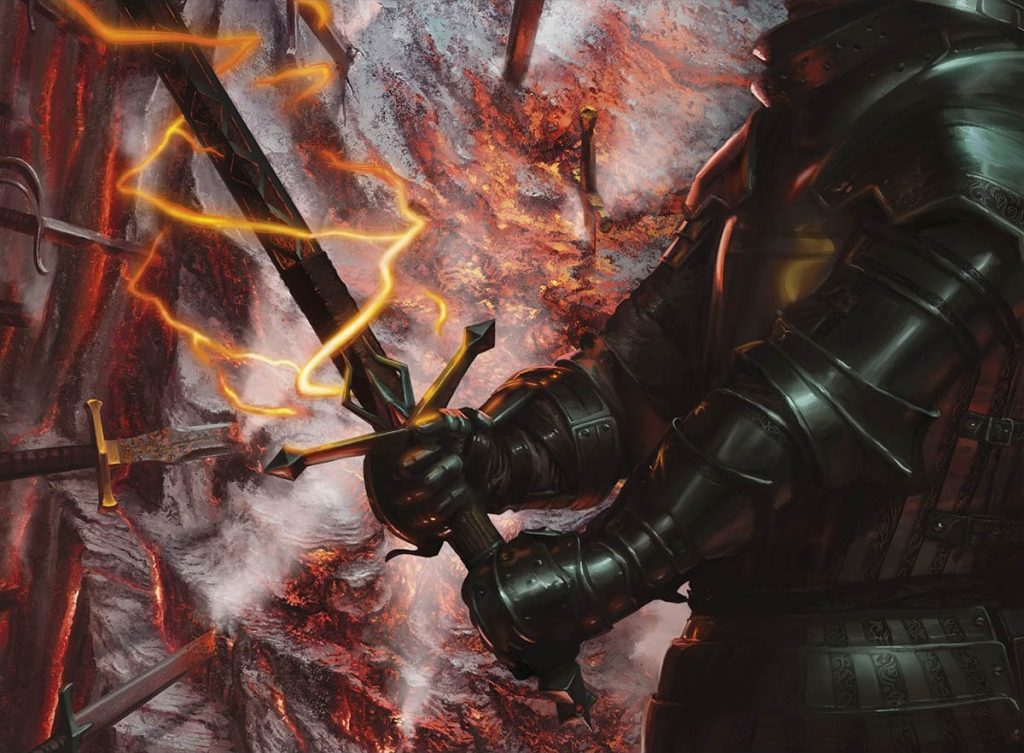
Embercleave | Illustration by Joe Slucher
Creatures (31)
Fervent Champion x4
Scorch Spitter x4
Rimrock Knight x4
Robber of the Rich x4
Runaway Steam-Kin x4
Anax, Hardened in the Forge x4
Bonecrusher Giant x4
Torbran, Thane of Red Fell x3
Sorcery (4)
Artifact (3)
Embercleave x3
Lands (22)
Castle Embereth x4
Mountain x18
Sideboard (15)
Redcap Melee x3
Lava Coil x4
Unchained Berserker x4
Chandra, Acolyte of Flame x2
Tibalt, Rakish Instigator
Experimental Frenzy
The current king of Arena. Mono Red Aggro is powerful, resilient, and versatile. This deck often wins by turn 4, making most sideboard tech your opponents have access to irrelevant.
VS Azorius Control
Largely dependent on the play and draw for game one, bring in Unchained Berserker and Tibalt, Rakish Instigator. Try to avoid committing more than one Berserker to the board at a time unless you’re confident that your opponent doesn’t have Shatter the Sky in hand. Don’t fall into the trap of trying to cast pump spells or Embercleave during combat when the opponent has Teferi, Time Raveler on board.
Pro tip: Send a Fervent Champion at Teferi and cast or pump before moving to the ordinary damage step. This way you’ll get to enjoy at least some of the benefits of Embercleave or Boulder Rush pumps.
VS Temur Reclamation
Go fast and play around board wipes where possible. Anax, Hardened in the Forge prevents you from being blown out should this happen by leaving you with Satyr tokens. Sideboard a Phoenix of Ash if you’re running them and keep Redcap Melee to cheaply remove your opponent’s Bonecrusher Giant.
VS Temur Adventures
Similar to Reclamation, go fast as Adventures doesn’t usually run board wipes. Stomp should be used to remove Edgewall Innkeeper. Lava Coil and Redcap Melee will give you the best possible chance to get through their midrange threats. Consider using Embercleave for value or free trades rather than maximizing damage-to-face, as cards like Lovestruck Beast are problematic to remove and can often lock you out of a win.
VS Jeskai Fires
Being faster than this midrange deck can be tough. Your best chance is to win the flip game 1 and sideboard in removal spells. Unchained Berserker will be reasonable tech in this matchup as Deafening Clarion doesn’t hurt him. Be mindful of Shatter the Sky, as some lists run main and/or sideboard, and Stomp is definitely going to be used to remove him where possible. Anax’s resilience plus Embercleave will help you push through. As per the Azorius matchup, always be mindful of Teferi, Time Raveler when casting during combat.
Azorius Control
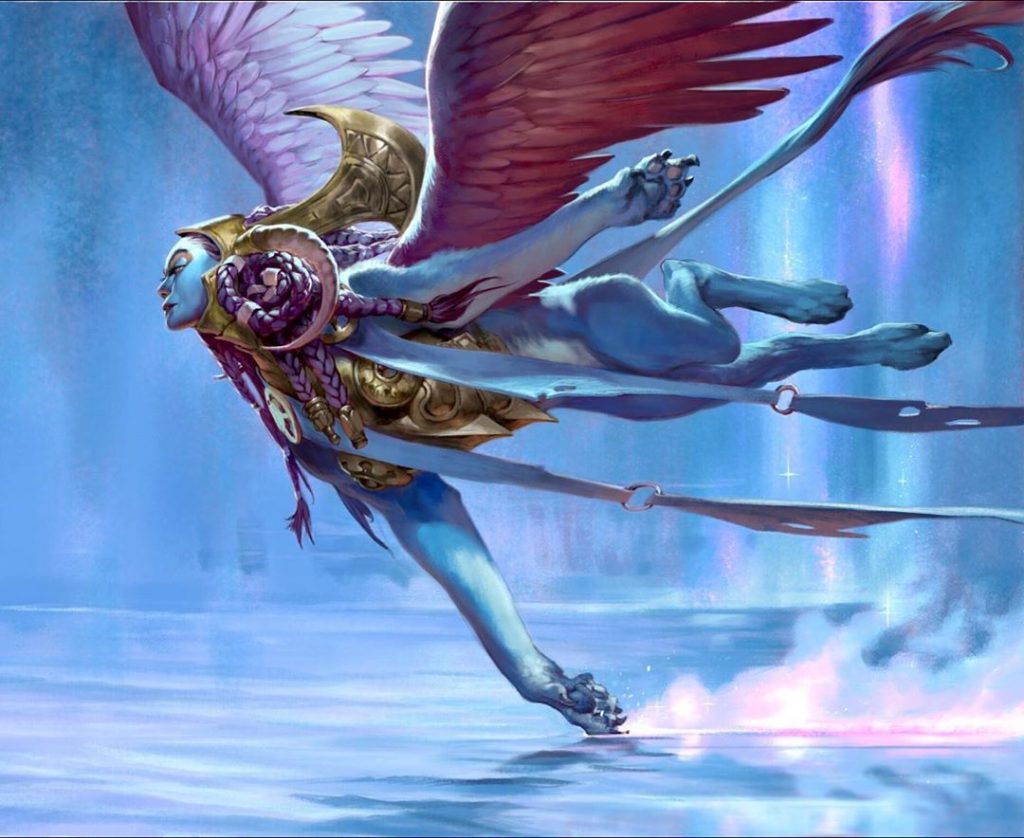
Dream Trawler | Illustration by Jesper Ejsing
Planeswalkers (7)
Narset, Parter of Veils x3
Teferi, Time Raveler x4
Creature (2)
Instants (12)
Thirst for Meaning x3
Absorb x3
Dovin's Veto x3
Mystical Dispute x3
Sorcery (3)
Enchantments (11)
Banishing Light
Birth of Meletis x3
Omen of the Sea x4
Elspeth Conquers Death x3
Lands (25)
Castle Ardenvale x3
Castle Vantress x2
Hallowed Fountain x4
Temple of Enlightenment x4
Fabled Passage
Plains x4
Island x7
Sideboard (15)
Devout Decree x2
Glass Casket x3
Aether Gust x4
Dovin's Veto
Mystical Dispute
Archon of Sun's Grace x2
Shatter the Sky
Dream Trawler
Our World’s champion PVDDR masterfully piloted this deck to the top spot in February 2020. The archetype has not consolidated into a single best list, so there are several sideboard cards available depending on the meta you’re in.
VS Mono Red Aggro
Draw. Your. Board wipes. This is arguably the most important card in the matchup. You’re going to win 99% of the time if you get to attack with a Dream Trawler, so you just need to get to that point. The sideboard offers a considerable amount of hate towards mono red with Glass Casket, Aether Gust, and Devout Decree. You could also consider running Cerulean Drake, although Bonecrusher Giant‘s Stomp can negate its protection.
VS Temur Reclamation
Game one can often come down to holding your Dovin’s Veto to counter their Expansion // Explosion. Game two, you’ll need to sniff out their sideboard tech as Nightpack Ambusher flash, Shifting Ceratops midrange, and Ionize/Izzet Control cards all require very different responses.
Aether Gust is your best bet to side in, as it doesn’t counter the Ceratops directly and protection doesn’t take effect until the spell resolves. This means that you’ll be able to buy some time and find some more permanent answers in board wipes or removal.
VS Temur Adventures
This is a tough matchup. Much like Temur Reclamation, this deck can tech in many different directions, all relevant to your own sideboarding responses. Bringing in removal and additional board wipes is the general game plan. You need to hang on long enough to get your threats out, but Edgewall Innkeeper can often mean playing into significant card advantage.
Glass Casket and Banishing Light offer some protection, but don’t be surprised if you get blown out by a doubled or tripled up Petty Theft. It’s up to the control deck to provide the answers to the many, many, many questions that Temur Adventures will throw at you in any midrange vs control matchup.
VS Jeskai Fires
Approaching this matchup is debated heavily in LGSes around the world. Knowing when to Absorb a Fires of Invention and when to allow it to resolve is a perplexing challenge to this matchup. The two things to consider when deciding to counter a Fires are:
1. What does their mana base look like? You should consider countering this on-curve if they’ve played two or three basic lands of different types as Dream Trawler, Cavalier of Gales, and Cavalier of Flame all require very specific color combinations. They may not be able to cast any of their threats normally, even if they have a full hand.
2. If they have one or two cards in hand, you should consider holding out to counter threats directly, as the Fires won’t net any value if they’re low on steam. You’ve just wasted your counter on a non-threat this turn, allowing them to resolve their threat next turn if you’re not holding multiple removal spells. Sideboarding Dovin’s Veto and Mystical Dispute can be tricky to get the balance right, but Aether Gust and Devout Decree are your best bets for negating the tempo gained from Fires.
Temur Reclamation
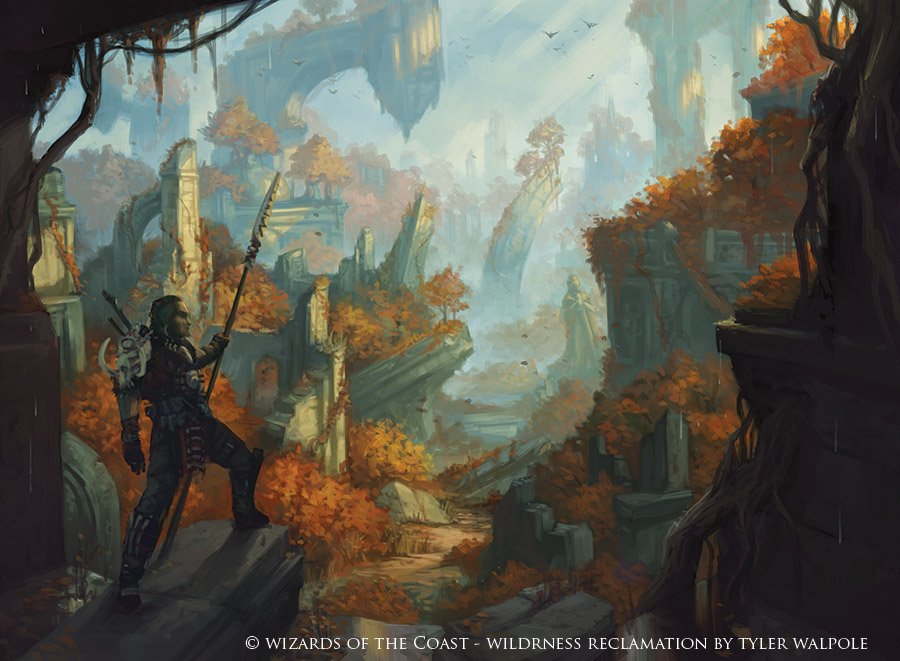
Wilderness Reclamation | Illustration by Tyler Walpole
Creatures (5)
Brazen Borrower x3
Uro, Titan of Nature's Wrath x2
Instants (20)
Opt x2
Mystical Dispute x2
Thassa's Intervention x4
Expansion // Explosion x4
Scorching Dragonfire x4
Growth Spiral x4
Sorcery (3)
Enchantments (6)
Wilderness Reclamation x4
Omen of the Sea x2
Lands (26)
Castle Vantress x2
Steam Vents x4
Temple of Epiphany x2
Stomping Ground x4
Temple of Abandon
Breeding Pool x4
Temple of Mystery x2
Fabled Passage x2
Island x2
Mountain x2
Forest
Sideboard (15)
Aether Gust x2
Fry x2
Mystical Dispute x2
Flame Sweep x2
Legion Warboss x4
Nightpack Ambusher x3
Temur Reclamation is a supremely strong deck, yet it only occupies a small portion of the meta because it’s an expensive deck to craft and requires a very high level of skill to pilot correctly. An inexperienced player would be lucky to get a 50% win rate from this deck. But, in the hands of an expert, it’s a powerful and deadly combo deck.
The game plan is relatively straight forward: ramp, play as many Wilderness Reclamations as you can, move to end step, and then blow your opponent up with a 20-damage Explosion nuke. Of course, it’s easier said than done.
VS Mono Red Aggro
This deck is well positioned as far as tools go for a reasonable matchup in concept. Uro, Titan of Nature’s Wrath provides heals while Petty Theft bounces threats that stick, managing the opponent’s tempo and allowing you to Storm’s Wrath for some decent value.
Both the main deck and sideboard provide good removal options and, like any deck in Standard that runs blue, Aether Gust will be at your disposal. Control your opponent until you can combo out for the win. Having the play game 1 will make things easier, but the draw doesn’t polarize results as much as it does for other decks facing off against mono red in the current meta.
VS Azorius Control
Patience will pay off more than anything in this matchup. You’re only worried about one card: Teferi, Time Raveler.
This card explicitly shuts down your ability to combo off with Wilderness Reclamation, so you should consider holding off all counters to destroy. Two copies of Fry in the sideboard will see great use for game 2 onward.
If they do resolve everyone’s favorite planeswalker, however, remembering Storm’s Wrath or Petty Theft will do a good job of removing or bouncing him. They have their own Brazen Borrowers which you’ll need to be mindful of, as bouncing your Wilderness Reclamation right before end step will definitely blow out your line of play.
VS Temur Adventures
Combo vs. midrange always gives a super wide array of board and game states, so their initial draws will dictate how you execute turns 1 through 6. Edgewall Innkeeper and Lucky Clover are on-cast triggers, so getting rid of them as soon as possible is very important if you want to avoid playing into card and cast advantage.
Escape to the Wilds is your priority card to counter, should your opponent draw it. The Adventures deck will often struggle to provide enough early-game pressure. Games 2 and 3 should see you bring in counter spells (they have a big value ceiling) set up to Explosion turn 6 or 7 after applying pressure with your Brazen Borrowers.
VS Jeskai Fires
In this matchup, you can essentially only take combat damage for one or two turns before you lose, as all threats you’ll face will do four to six damage. Be careful of the implications of shocking in land in this matchup as it can often reduce the turn clock. Damage per turn should be very simple to calculate here since all your opponent’s plays are relatively transparent except for an occasional Bonecrusher Giant‘s Stomp for extra reach.
This deck won’t interact with you much game 1, as Fires of Invention shuts off their counter spells. They may sideboard in extra control tools and trick you into overcommitting to plays that tap you out, however, only to counter all your Reclamations. Don’t be scared to commit an Explosion to a threat to get yourself an extra turn or two and refill your hand.
Temur Adventures
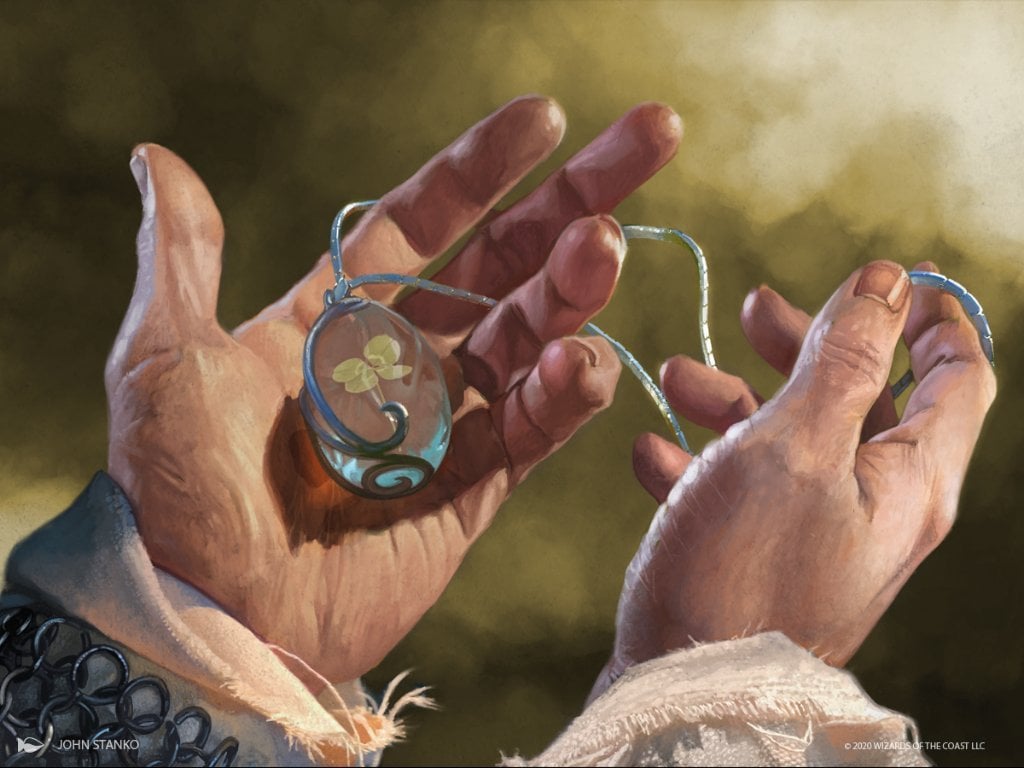
Lucky Clover | Illustration by John Stanko
Creatures (24)
Edgewall Innkeeper x4
Fae of Wishes x4
Brazen Borrower x4
Bonecrusher Giant x4
Lovestruck Beast x4
Beanstalk Giant x4
Instant/Sorcery (1)
Incubation // Incongruity
Sorcery (3)
Artifacts (5)
Lucky Clover x4
The Great Henge
Lands (27)
Steam Vents x3
Temple of Epiphany
Stomping Ground x4
Breeding Pool x4
Temple of Mystery x3
Island x4
Mountain x2
Forest x6
Sideboard (15)
Mystic Repeal
Shadowspear
Aether Gust x3
Disdainful Stroke
Negate
Fling
Return to Nature
Domri's Ambush
Sorcerous Spyglass
Storm's Wrath
Once and Future
Escape to the Wilds
Chandra, Awakened Inferno
Wait, what? The deck that wasn’t really a thing in the Throne of Eldraine meta is now a thing in the Theros meta. Making things even more interesting is that there are only two or three new cards in the deck.
Subtlety is often all that’s required with a toolbox sideboard like this, as Storm’s Wrath gives red a legitimate answer to aggro and planeswalker lockdown. Combined with Shadowspear, a card that seems super broken but just isn’t played much, the tools to go to the distance in a BO3 are now available for this deck.
VS Mono Red Aggro
Rock-paper-scissors. Red is faster, but you’re pretty close for a midrange deck. Card advantage and blockers will be your savior in this matchup. You don’t need to ever hit your opponent. Get your Edgewall Innkeepers out and get that card advantage. Expect a turn 4 to 5 clock, anything longer than that and you’re going to be hugely favored.
Casting Lucky Clover with some Stomps is nice for removing all those pesky threats. Inversely, be mindful to not double-cast Petty Theft with only one legal target, as you’ll be unable to avoid fizzling your “real” cast, meaning that Brazen Borrower is going in the bin.
Turn 2 Fae of Wishes is pretty much the best blocker you could ask for in this matchup. Be prepared for your opponent to play a second Fervent Champion into Boulder Rush to get a free trade. The jury is out as to whether you’re upset at this, mind you. Lovestruck Beast only needs to be a blocker and is a solid turn 3 play. Sideboarding in Aether Gust to catch those Embercleaves, Anax, Hardened in the Forge’s, and Torbrans is the edge you need in games 2 and 3.
VS Azorius Control
You shouldn’t lose this matchup, save for some horrible things happening to you. Your opponent will try to resolve Teferi, Time Raveler. That’s OK. Just blow it up, bounce it, and swing at him with a Brazen Borrower or Fae of Wishes. Or really do whatever you need to do.
Everyone (except for us here at Draftsim) hates Teferi, and this is the deck to tell control players what you think of them. Your card advantage will occur much earlier than theirs, so focus on getting maximum value out of Lucky Clover and Edgewall Innkeeper. Lovestruck Beast and Bonecrusher Giant are card-draw when Shatter the Sky inevitably gets cast, so consider committing one at a time. This won’t usually reduce your kill clock. Lovestruck Beast also has the added benefit of trading with blocking Dream Trawlers.
VS Temur Reclamation
Winning this matchup can be tough. You’ve got a crazy high value ceiling, but Reclamation should assume the role of the aggressor. Playing around board wipes is critical. Lovestruck Beast doesn’t succumb to Storm’s Wrath but may not be able to attack afterwards if you’re not able to repopulate the board with dudes. Game 2 and 3 should see you sideboard in Aether Gust.

Your game plan shouldn’t change too much, except you can occasionally catch a lethal Expansion // Explosion with Aether Gust. You’ll have to be more mindful of your opponent’s adjusted game plan, though, if they’re bringing in specific counter spells or flash creatures.
VS Jeskai Fires
Midrange vs midrange. This matchup is wild! The Fires deck is either going to be way slower or way faster depending on your opponent’s draw/mulligans. Paying attention to their mana base is going to give you clues on what you need to be mindful of, as taking an inefficient line such as turn 2 Fabled Passage probably means they’re setting up for Deafening Clarion or they’re trying to level you into thinking they have it in hand… Who knows.
My advice when this happens is to assume they have it, as getting blown out by a Clarion hitting three to four targets can hurt a lot. You’re often just replacing cards in hand if you’ve got Edgewall Innkeeper out, which is never a bad thing.
Jeskai Fires
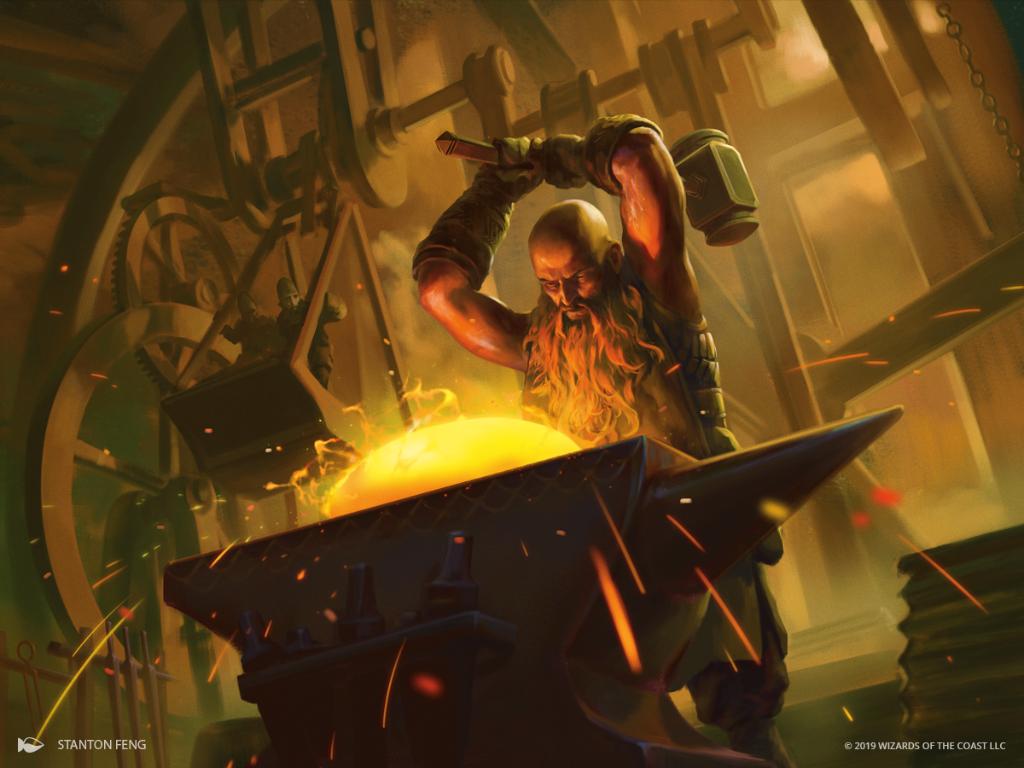
Fires of Invention | Illustration by Stanton Feng
Planeswalker (4)
Creatures (17)
Bonecrusher Giant x4
Sphinx of Foresight x4
Kenrith, the Returned King x3
Cavalier of Gales x2
Cavalier of Flame x4
Instants (3)
Aether Gust x2
Heliod's Intervention
Sorcery (4)
Enchantments (5)
Fires of Invention x4
Elspeth Conquers Death
Lands (27)
Castle Vantress x2
Hallowed Fountain x4
Steam Vents x4
Temple of Epiphany x3
Sacred Foundry x3
Temple of Triumph x3
Fabled Passage x3
Plains
Island x2
Mountain x2
Sideboard (15)
Devout Decree x2
Disenchant x2
Tithe Taker x2
Aether Gust x2
Robber of the Rich x2
Mystical Dispute x3
Legion Warboss x2
Fires is in an interesting place. Despite existing in the Eldraine meta, the deck is yet to consolidate into a widely accepted list. To include or exclude Dream Trawler gives a split decision even at the highest tier of play, with it split down the middle at Worlds’ XXVI with the four lists that entered. Elspeth Conquers Death and Shatter the Sky are the other new additions to the list since Theros, which has definitely added additional tools to this already powerful deck.
VS Mono Red Aggro
Deafening Clarion and Shatter the Sky are your best bets to survive past turn 4 and 5. Given the popularity of red right now, most lists are main boarding Aether Gust as well. Once your opponent reaches turn 3, you should be assessing each turn as to whether they can play Embercleave based on the board and whether this creates a lethal situation if they do.
Conservative blocking should be exercised, and Teferi, Time Raveler should be used to bounce Anax, Hardened in the Forge and Torbran for the most part. If you don’t have Fires out, use your opponent’s combat tricks against them: let them overcommit to a single creature which can be bounced after an attempted Embercleave equip or Boulder Rush pump. This has the added effect of fizzling the card, so Rimrock Knight won’t trouble you thereafter.
VS Azorius Control
Now you’re the aggressor. Curving out should be your game plan for mulligans. This is assisted greatly by Sphinx of Foresight, so consider the pregame effect scries when planning for land drops etc. Turn 4 or 5 Shatter the Sky shouldn’t blow you out too much if you’re only letting them two-for-one, as you’re going to draw a card to equalize. Getting your Teferi to stick is the number one priority, as their options are very limited after this. Ditch your own board wipes and bring in those Legion Warboss’ for game 2 and 3. This is one of the few matchups where *gasp* Aether Gust doesn’t do anything.
VS Temur Reclamation
Much like the Azorius matchup, getting Teferi to stick is the first step towards victory. This deck, however, has many sorcery-speed responses that will stop it from sticking around. A lot of your threats will be able to poke above Storm's Wrath, but your opponent can easily double down with cheap single-target removal. Kenrith, the Returned King is the most versatile of your threats in this matchup, so consider your lines with him as much as possible.
VS Temur Adventures
You need to be extremely mindful of your mana base when planning out turn 3 and 4, as the difference between a Clarion on those turns might be the difference of three extra draws. If the game gets to the grind-y end, the card draw and healing will be an important consideration with Kenrith. Determining if you’ll be able to turn your Cavalier of Flames into bombs when they die is also a factor worth considering, as this can often give you the reach you need thanks to it causing a pseudo-unblockable situation. If it wasn’t already super obvious, Aether Gust is good here too.
Tier 2
Jund Sacrifice
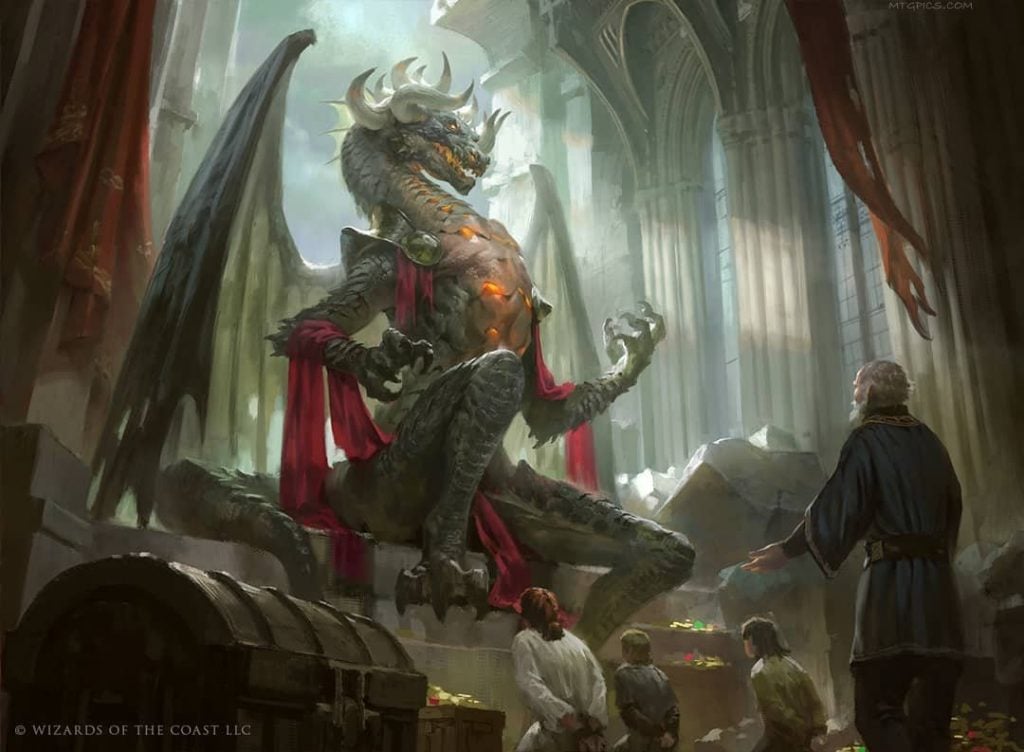
Korvold, Fae-Cursed King | Illustration by Wisnu Tan
Creatures (23)
Cauldron Familiar x4
Gilded Goose x4
Korvold, Fae-Cursed King x4
Massacre Girl
Mayhem Devil x4
Murderous Rider x2
Thrashing Brontodon x2
Wicked Wolf x2
Sorcery (4)
Artifact (4)
Witch's Oven x4
Enchantment (4)
Lands (25)
Blood Crypt x4
Castle Locthwain
Fabled Passage x4
Overgrown Tomb x4
Stomping Ground x4
Swamp x3
Forest x4
Mountain
Sideboard (15)
Massacre Girl
Casualties of War x2
Deathless Knight
Duress x2
Epic Downfall x3
Klothys, God of Destiny x2
Noxious Grasp x2
Scorching Dragonfire x2
Piotr Glogowski is the top dog with this deck, being the only person to pilot this one to the top 16 of Worlds. Much Like Temur Reclamation, it’s terrifying in the right hands, but proves to be a difficult pilot which produces average results for most. On Arena, this occupies a reasonable portion of the meta due its reasonable matchup against red. Unfortunately, this deck can be mechanically cumbersome to pilot on Arena, with a significant number of actions to consider (and execute) before roping, which may contribute to its smaller play volume.
VS Aggro
Survive your opponent’s aggression with Food heals, blockers, and pings from Mayhem Devil. You’ll be the slower deck, but not by much.
VS Midrange
You’re the Fae-Cursed King of Value, so take your time and out-value your opponent’s threats. A big Korvold will fly over any Giants or Lovestruck Beasts, with plenty of farm animals in your army to block their advances.
VS Control
Your draw engine will prove too much for control decks if they’re able to go the distance. Korvold is one of the few cards in the meta that can contend with Dream Trawler but be mindful of Elspeth Conquers Death.
Gruul Aggro

Questing Beast | Illustration by Igor Kieryluk
Creatures (28)
Anax, Hardened in the Forge x4
Bonecrusher Giant x2
Gallia of the Endless Dance x2
Gruul Spellbreaker x2
Klothys, God of Destiny x2
Pelt Collector x4
Questing Beast x4
Robber of the Rich x4
Zhur-Taa Goblin x4
Artifact (4)
Embercleave x4
Enchantment (4)
Lands (24)
Stomping Ground x4
Temple of Abandon x4
Forest x8
Mountain x8
Sideboard (15)
Cindervines x2
Cosmotronic Wave x2
Lava Coil x3
Redcap Melee x4
Shifting Ceratops x4
Sometimes meme cards like woo-girl Gallia of the Endless Dance find homes in an OK deck. Gruul Aggro attempts to take all the good parts of red aggro and combine it with midrange bodies from green. You should play this deck if you hate drawing cards as there’s almost no card draw in the deck, making it very inconsistent. When on-curve, though, this deck will beat anything but god-tier draws from any tier 1 deck.
VS Aggro
You will be slower, but only just. Making good trades to delay their Embercleave cast is where you’ll find success. Putting those riot threats down in +1/+1 mode will give you the stopping power you need.
VS Midrange
Your deck is right in between aggro and midrange as far as speed is concerned, so this matchup will be almost entirely decided by your ability to draw/mulligan well. Midrange decks will definitely out-value you if you’re not playing on-curve. Cosmotronic Wave will catch them off guard, so sideboard that in to get rid of their dudes.
VS Control
Go fast, go face. Questing Beast makes short work of any planeswalkers, so if you have options consider holding them back until after a Teferi, Narset, or Nissa enters the battlefield. Everyone’s favorite keyword-soup-not-hydra hydra also has the added benefit of running right past walls.
Bant Ramp
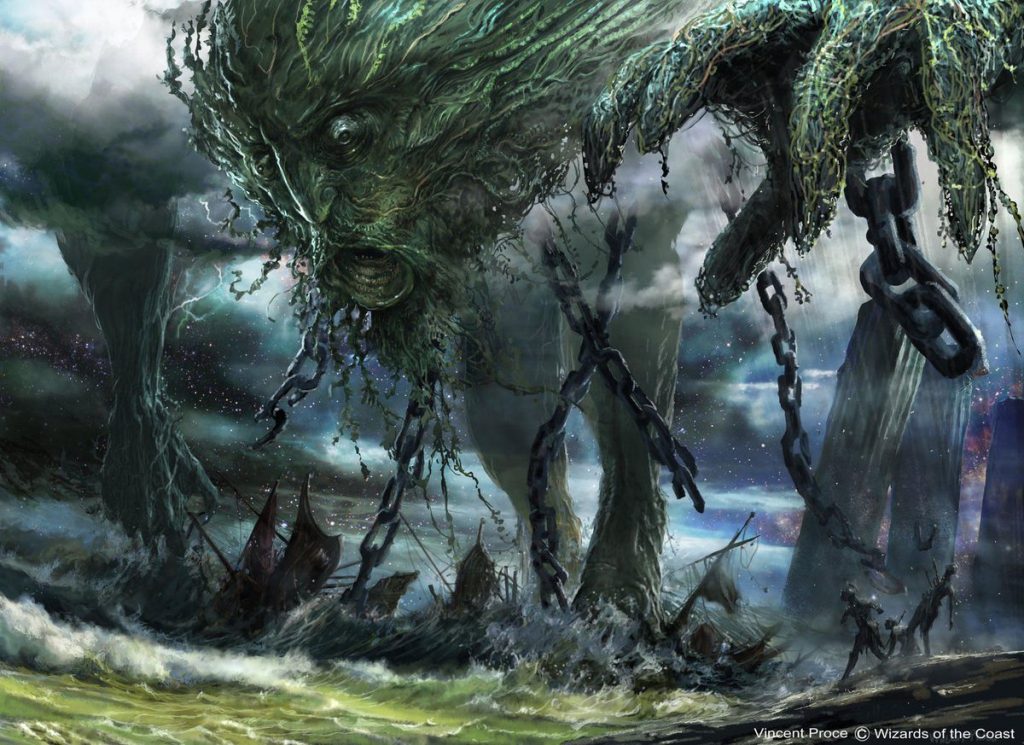
Uro, Titan of Nature's Wrath | Illustration by Vincent Proce
Planeswalkers (9)
Nissa, Who Shakes the World x4
Tamiyo, Collector of Tales
Teferi, Time Raveler x4
Creatures (11)
Dream Trawler x2
Hydroid Krasis x3
Knight of Autumn x2
Uro, Titan of Nature's Wrath x4
Instants (5)
Sorcery (3)
Enchantment (3)
Lands (29)
Breeding Pool x4
Fabled Passage x2
Hallowed Fountain x4
Temple Garden x4
Temple of Enlightenment x2
Temple of Mystery x4
Temple of Plenty x3
Forest x3
Island x2
Plains
Sideboard (15)
Aether Gust x2
Agent of Treachery
Devout Decree x3
Dovin's Veto x2
Heliod's Intervention
Lovestruck Beast x2
Mystical Dispute x3
Narset, Parter of Veils
This deck is rising in popularity fast due to its explosive style and big, cool threats. If you like drawing cards and having loads of non-creature permanents out on the field at any given time, this deck is for you. It doesn’t have a great showing in notable tournaments recently, but that doesn’t mean it’s not a great deck. This deck is just full of Good Stuff™.
VS Aggro
Heal and ramp, ramp and heal. Uro is your man-giant-thing. You’ll need to carefully consider what to sideboard out for games 2 and 3. You’ve got lots of things to handle mono red with Devout Decree and Aether Gust in the mix. You’ll need to bring the curve down lower and, hopefully, win the play for game one.
VS Midrange
Planeswalkers and big threats are going to give you the win in this matchup, as you’ll have to take on the role of the slower, control-focused deck here. Be mindful of the threats Fires of Invention can dish out, as they may blow you out with a hasted Cavalier of Gales. Sometimes you’ll get lucky and curve perfectly into 10 million mana with Nissa and send those adventurers packing.
VS Control
Your deck has all the tools that control decks have, just less of them. Your opponent will struggle to deal with multiple planeswalkers, and Teferi can lock them out completely if you can resolve him. Nissa and Uro do a great job at baiting out premium removal. Your board wipes are pretty much useless, giving you some free slots for game 2 and 3.
Sultai Midrange
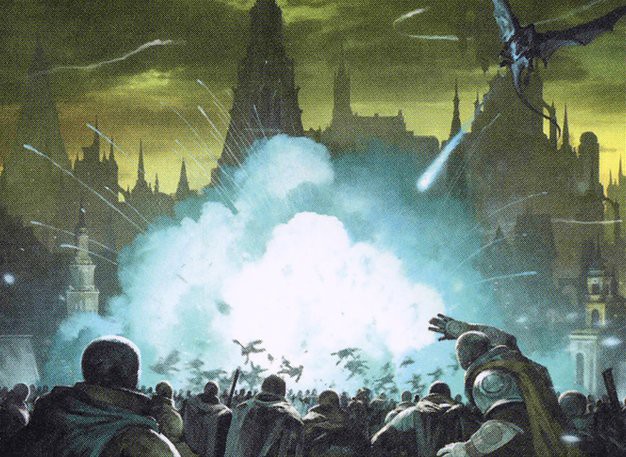
Casualties of War | Illustration by Tomasz Jedruszek
Planeswalkers (7)
Liliana, Dreadhorde General
Nissa, Who Shakes the World x3
Tamiyo, Collector of Tales x2
Vraska, Golgari Queen
Creatures (7)
Hydroid Krasis x4
Uro, Titan of Nature's Wrath x3
Instants (9)
Aether Gust
Erebos's Intervention x2
Growth Spiral x4
Mystical Dispute
Tyrant's Scorn
Sorceries (9)
Agonizing Remorse x3
Casualties of War x3
Thought Erasure x3
Lands (28)
Breeding Pool x4
Fabled Passage x4
Overgrown Tomb x4
Temple of Deceit
Temple of Malady x3
Temple of Mystery x2
Watery Grave x3
Forest x3
Island x3
Swamp
Sideboard (15)
Aether Gust x2
Mystical Dispute x2
Cry of the Carnarium
Disfigure x2
Leyline of the Void x3
Lovestruck Beast x4
Ritual of Soot
Very similar to Bant Ramp in its approach, with one notable exception: Casualties of War. This deck is so, so, so greedy and it’s wonderful. Using this card will vary from game-ending to six mana: remove-a-land-and-two-drop.
VS Aggro
All your creatures heal you, but they don’t exactly make great blockers early game. Your super friends run the risk of being controlled by creatures. Your best bet is to ramp to the point where you can remove the board each turn and grind them out. Side in board wipes for an easier game 2 and 3. This will be a tough matchup for you without them.
VS Midrange
This is entirely dependent on which midrange matchup you’re facing. The general principle of ramping into Casualties of War is going to be your best bet, as all midrange decks will present you with an array of enchantments, planeswalkers, artifacts, and creatures that need to go in the bin. Most midrange decks will be faster than you, so consider how you mulligan when on the play accordingly.
VS Control
Your super friends will massively help you with this matchup, as board wipes can’t touch ‘em! Liliana is one of the few ways to reliably remove a Dream Trawler, so consider holding her in hand until its dropped. If you ramp well, you can prevent the mid-game from getting out of hand by controlling their premium castle lands.
Rakdos Sacrifice
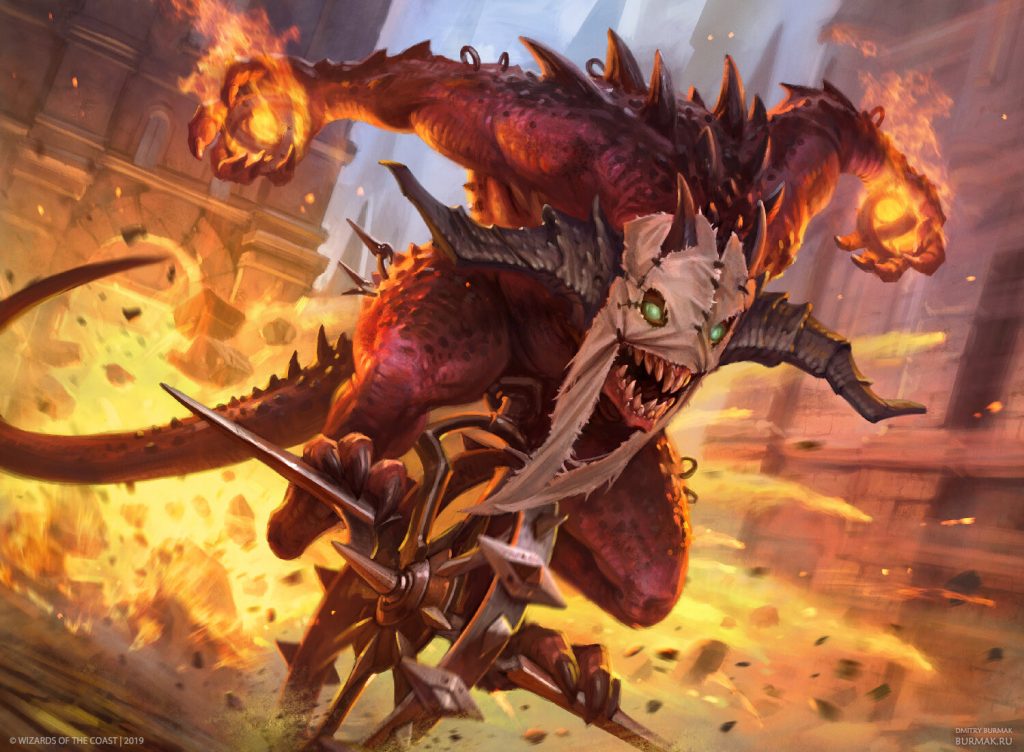
Mayhem Devil | Illustration by Dmitry Burmak
Creatures (26)
Cauldron Familiar x4
Kroxa, Titan of Death's Hunger x3
Mayhem Devil x4
Midnight Reaper x3
Mire Triton x4
Priest of Forgotten Gods x4
Woe Strider x4
Sorcery (4)
Artifact (4)
Witch's Oven x4
Enchantment (2)
Lands (24)
Blood Crypt x4
Castle Locthwain x2
Fabled Passage x4
Temple of Malice x4
Mountain x4
Swamp x6
Sideboard (15)
Act of Treason
Agonizing Remorse x4
Embereth Shieldbreaker x3
Epic Downfall
Legion's End x2
Redcap Melee x2
Scorching Dragonfire x2
This deck is super fun to play with, but horrible to play against. Cutting green from the Jund list allows for more consistency in mana base and makes room for the hand disruption of Kroxa and Agonizing Remorse. We’ve seen an increase in popularity for this deck recently, possibly due to the increase of other midrange decks with great targets to steal with Claim the Firstborn. Looking at you Uro, Titan of Nature's Wrath, Kroxa, and Hydroid Krasis.
VS Aggro
You’re a little slower than mono red but Claim the Firstborn is MVP, so you’ll occasionally be able to take your opponent’s Embercleave’d Anax, Hardened in the Forge to do infinite damage for one mana. Your board presence should be able to contest most threats. Hanging on to pings from Mayhem Devil is the most reliable way to kill first-strikers like Fervent Champion.
VS Midrange
You’ll be the faster deck most of the time. Apply pressure early and hold Claim the Firstborn for blow outs with their premium target. Mire Triton is a unique card to your decklist which creates a lot of awkward stalemates for your opponent, even if they have considerably larger threats.
VS Control
Go as fast as you can and maximize sacrifice value when faced with a board wipe. You’ll often be able to reduce the number of targets on board to one before the spell resolves. A few extra scries and pings will help you get there.
Tier Spooky
Azorius Flicker

Thassa, Deep-Dwelling | Illustration by Zack Stella
Planeswalkers (4)
Teferi, Time Raveler x3
Ashiok, Dream Render
Creatures (27)
Gadwick, the Wizened x2
Charming Prince x4
Cavalier of Gales x2
Fblthp, the Lost x2
Elite Guardmage x4
Thassa, Deep-Dwelling x3
Agent of Treachery x2
Brazen Borrower x4
Thassa's Oracle x2
Dream Trawler x2
Sorceries (3)
Sideboard (15)
Devout Decree x3
Mystical Dispute x3
Planar Cleansing
Dovin's Veto x3
Ashiok, Dream Render
Aether Gust x2
Heliod's Intervention
Whirlwind Denial
This deck has been included for fun and represents a very cool approach to dealing with Mono Red Aggro. It includes ten main deck creatures with heal effects, eight of which can be played early and on-curve and later flickered by Thassa, Deep-Dwelling. Azorius Flicker is almost entirely designed to hate on the huge presence of mono red but still manages to have enough tools to have not-horrible matchups against many other archetypes due to its value engine, stickiness, and toolbox cards in the side.
When compared to Azorius Control, mind you, it’s almost strictly worse in every matchup outside of this. If you’re constantly queuing into mono red, this is the deck to play to guarantee you get no mono red matches. #variance
If you’re already playing Azorius Control, then this is a fun alternative to try without spending loads of Wildcards.
VS Aggro
Playing cards on-curve, Charming Prince is a great start to stem the damage from red. Be mindful of game 2 and 3 Unchained Berserkers, though your board wipes and blue creatures should make short work of them.
VS Midrange
Your game plan is to get those value engines out and slow the game down. Your healing is only going to be relevant vs the faster midrange decks, and card draw will be your best friend. Occasionally they’ll lose to your fliers swarming, but don’t feel like you need to force trades as your flicker effects give pseudo-vigilance.
VS Control
Not committing multiple vulnerable threats will limit the effectiveness of your opponent's board wipes. You could add Cavalier of Dawn to the side if you’re often queuing into control, as this is another great tool with a lot of flexibility. Lines such as generating a 3/3 each turn by targeting an indestructible Thassa after destroying a difficult planeswalker is a value move for the ages.
The Next Rotation
We’ve ranked each deck’s vulnerability to 2020’s Standard rotation based on how much of the current deck will be rotated out. We won’t factor dual land reprints into the score because of their uncertainty. We should expect something comparable at some point in this block or first set of the next one. It’s worth noting that we’ve ranked these mostly on volume of cards lost without factoring rarity, though we will address rarity of the Wildcards needed for the top two decks.
| Deck | Main Deck Cards Rotating | Sideboard Cards Rotating |
|---|---|---|
| 1. Temur Adventures | 1 | 5 |
| 2. Mono Red Aggro | 4 | 3 |
| 3. Jund Sacrifice | 2 | 3 |
| 4. Gruul Aggro | 4 | 1 |
| 5. Azorius Control | 4 | 3 |
| 6. Rakdos Sacrifice | 6 | 4 |
| 7. Jeskai Fires | 6 | 5 |
| 8. Bant Ramp | 7 | 5 |
| 9. Sultai Midrange | 10 | 4 |
| 10. Temur Reclamation | 3 | 5 |
Things of note:
- Temur Reclamation loses both its namesake and its win condition;
- Azorius Control and Jeskai Fires lose both Teferi and Narset, an extreme (some say meta-warping) combination that contributes to the decks’ overall power level;
- Aether Gust is an MVP contender in any blue deck, so when it rotates (or gets banned?) we can expect to see more green and red doing green and red things should a replacement card of comparable effect not be found.
The Safe Crafts
The clear winners for being the safest decks to craft are Mono Red Aggro and Temur Adventures being the safest crafts.
Temur Adventures
Without consideration for land base, Temur Adventures is an entirely deck new core that will rotate all at once in 2021. The main deck requires 16 rare Wildcards and five mythic Wildcards. The land base is in a more precarious predicament with 16 rare Wildcards needed, all of which are rotating. If you’ve already finished your land base, though, this is a safe craft.
We see this deck suffers the same challenge a lot of multicolor decks face when we cast our eyes to the paper environment; The land base is 90% of the deck’s cost. You could try a budget alternative and replace the shocklands with Guildgates.
Format Staples
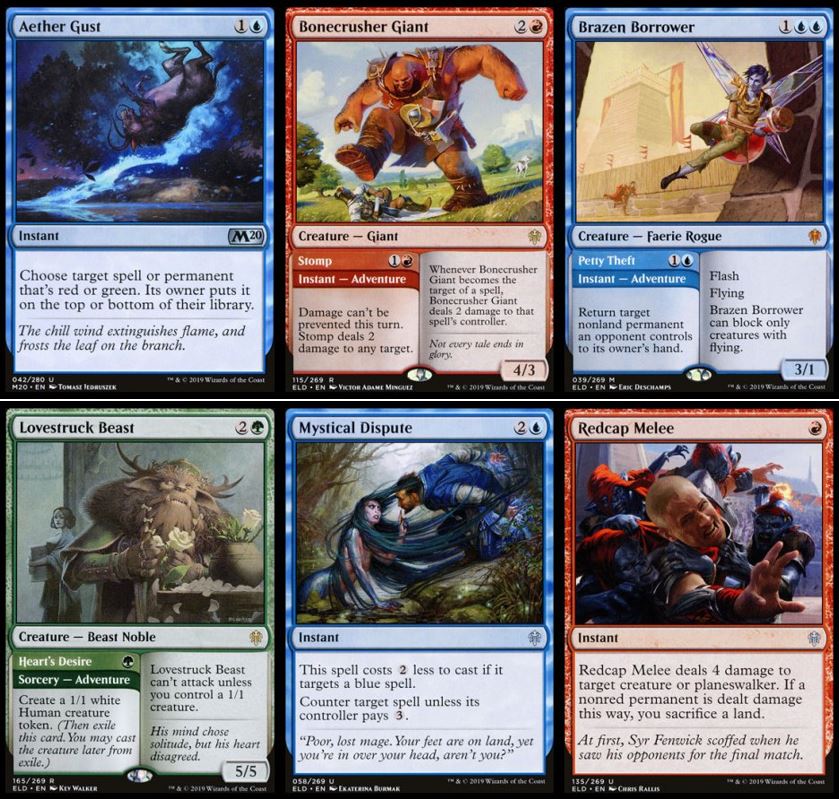
Mono Red Aggro
Mono Red only requires 20 rares and eight mythics to bring it to tier 1 level, with only four rare and no mythic slots rotating from the main deck. This deck is great to play and cheap to craft, but if you’re new to magic (or Arena), you might find yourself wanting more out of your games as the play style is semi-repetitive once you understand each matchup.
Format Staples

The Risky Crafts
Sultai Midrange/Bant Ramp
Excluding basic lands, Sultai will keep 17 main-deck cards post-rotation, with Bant keeping only 11. The upside, however, is that the cards staying put after rotation will surely find new homes in other competitive decks. That’s still a lot of Wildcards down the (Historic) toilet, though.
Temur Reclamation's Problem
OK, so this one needs its own category. In a vacuum, Temur Reclamation deck doesn’t survive rotation at all, with the two most important cards (Wilderness Reclamation and Expansion // Explosion) biting the dust. This is only 4 rare slots, though, so nothing super expensive is lost.
The rest of the deck doesn’t work without Reclamation and Explosion and I’m not convinced that enough of these cards could be rescued for another *single* deck in a post-rotation environment. This might change in the future, but we can’t identify anything remotely competitive right now save for maybe half an Izzet or Simic Flash shell.
Format Staples
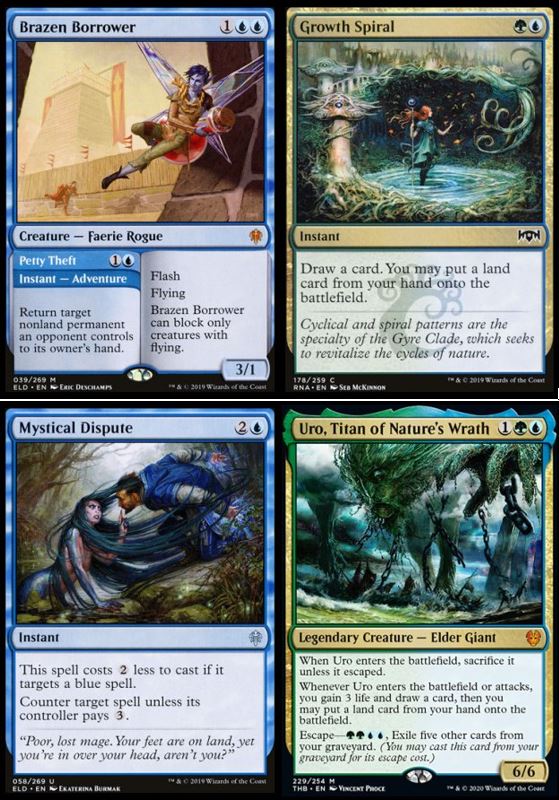
Some Things to Consider
Best-of-One vs Best-of-Three
Typically, Magic is played in a BO3 format and the same is true with all major MTG Arena events. The BO1 queue on Arena provides an opportunity for players to grind out fast games with no breaks for sideboarding slowing you down. You’re generally going to see meme-decks that can’t win once a particularly jank-y win condition is demonstrated, though. Oh, and mono color aggro.
Unfortunately, this is often the queue used to quickly grind daily tasks, and mono colour aggro is the fastest way to do this. For newer players or players with a limited card pool, this environment presents a great opportunity for practicing a deck core before deciding on sideboard crafts.
Standard Bans
The current banned cards in Standard are:
It wasn’t particularly shocking to see these cards banned in Standard as they created a Simic shell that was extremely tough to deal with. Consider yourself lucky if you avoided the brOko meta.
On that note, here are some cards that may be too powerful and have the potential to be banned in Standard. That said, a lot of these have made it past the danger zone, so don’t worry too much:
- Aether Gust
- Teferi, Time Raveler
- Narset, Parter of Veils
- Embercleave
- Anax, Hardened in the Forge
- Light Up the Stage

The only card on this list that I believe has a real potential to be banned is Aether Gust. It simply hits too much of the meta—or does it keep the meta in-check? —and is so flexible. That said, we could probably write 10,000 words on this card alone, so let’s just move on.
A Nice Neat Bow
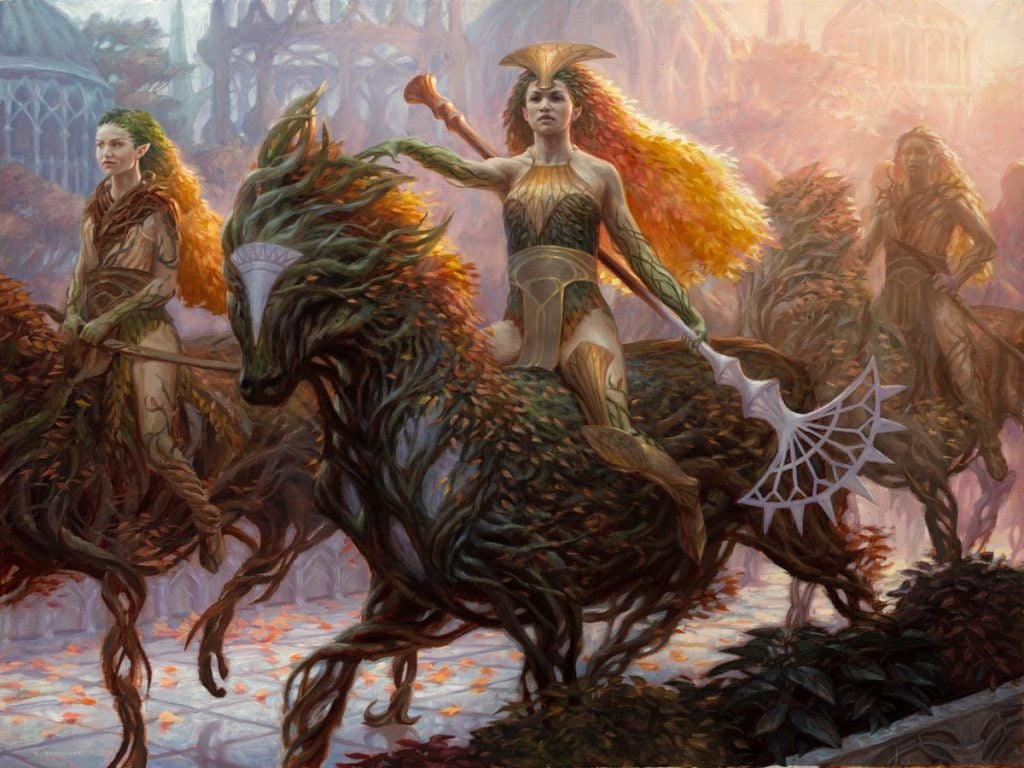
Knight of Autumn | Illustration by Ryan Pancoast
Standard is in a great place right now. We’ve got viable options for aggro, midrange, control, and combo decks to compete at the highest levels of Magic. While there are a few cards that may become problematic in the future, we’ve got diversity in results and the broader meta. As we consider the next release with Ikoria: Lair of Behemoths, it would be great to see some more options for interacting with problematic cards like Teferi and Embercleave. Ironically, Teferi is a proactive answer to Embercleave.
The future health of Standard, particularly on the Arena ladder, will largely depend on whether new tools are be printed to keep Mono Red Aggro in check and whether another aggro deck is able to compete with red’s speed. As we discussed earlier, the average game time on aggressive decks means players can sacrifice win rate to reduce the grind on the ladder.
As far as predictions go, we can probably expect the Timmy in all of us to get their fair share of big creature options with a name like “Lair of Behemoths”. Simic colors and the ramp access they grant seem almost necessary to get big stuff onto the board, at least recently. Although it would be exciting to see “Big Red” decks become viable.
What are your thoughts on the whole thing? Let us know in the comments below!
Follow Draftsim for awesome articles and set updates: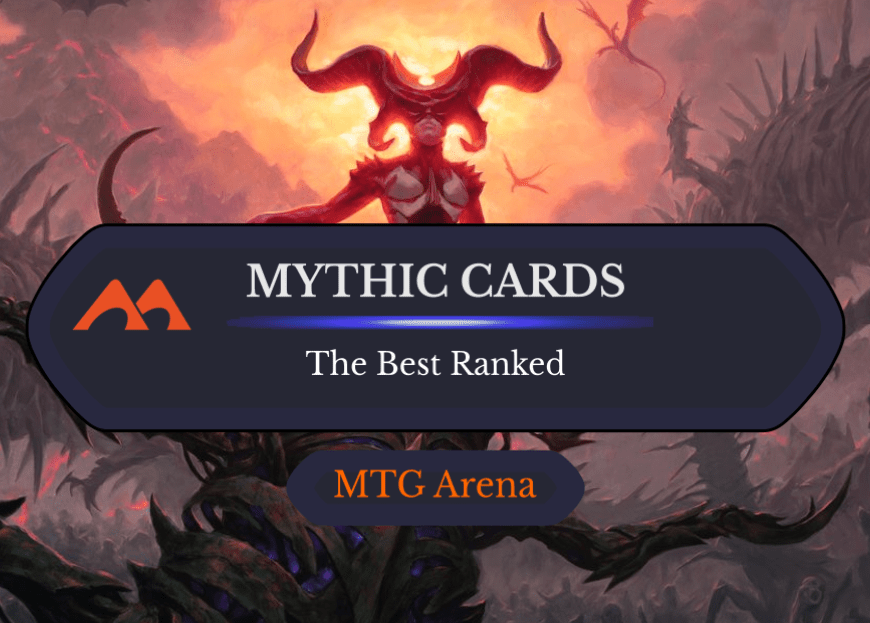
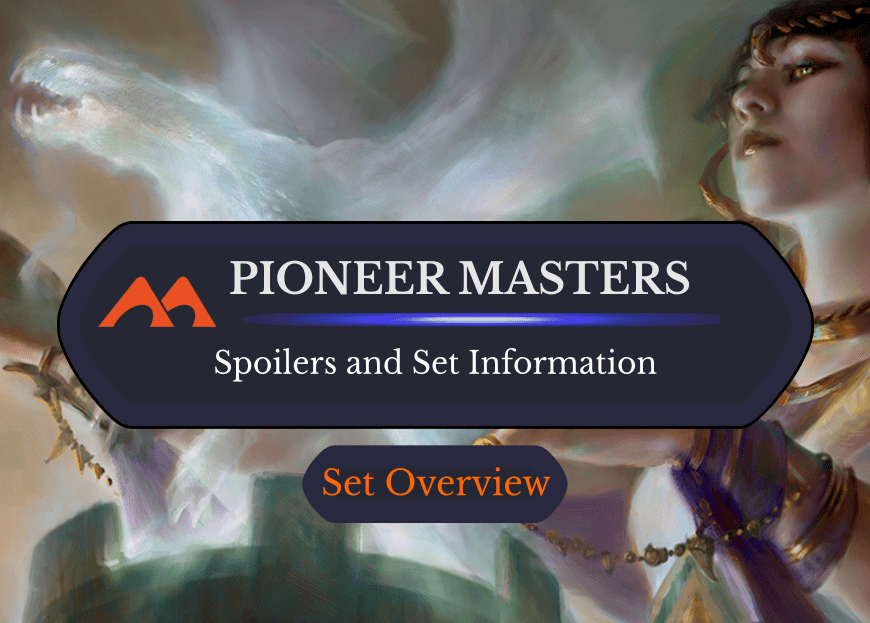
Add Comment